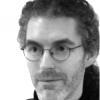Researchers here note that the state of research into the relationships between exercise, physical fitness, and epigenetic aging (or indeed, any other assessment of biological age provided by forms of aging clock) is patchy at best. There are at present too few studies and too little data for researchers to be able to confidently describe the degree to which various levels of exercise and fitness affect aging clocks, as compared to what it is possible to achieve for well-investigated outcomes such as risk of age-related disease and mortality.
The concept of an epigenetic clock is a predictive model based on DNA methylation patterns that provides a more accurate estimate of biological age than chronological age. Physical activity has emerged as a modifiable lifestyle factor that can influence the epigenetic clock and may serve as a geroprotective intervention to extend the health span and possibly the life span. However, some studies have discussed these effects without clearly distinguishing between physical activity, physical fitness, and exercise, which are closely related terms.
These foundational terms - physical activity, exercise, and physical fitness - are often used interchangeably in the general population; however, they have distinct physiological and epidemiological implications, particularly in aging research. For instance, while light-intensity physical activity, such as casual walking, contributes to energy expenditure and general health maintenance, it may not provide a sufficient stimulus to induce the molecular and cellular adaptations typically associated with geroprotective effects. In contrast, structured exercise programs, especially those incorporating moderate-to-vigorous intensity, are more likely to elicit systemic responses such as improved mitochondrial function, enhanced insulin sensitivity, and modulation of epigenetic markers. Furthermore, physical fitness, particularly cardiorespiratory fitness (CRF) and muscular strength, has been shown to be a robust predictor of morbidity and mortality in older adults. It is important to note that while physical activity and exercise are behaviors, physical fitness represents an integrated outcome influenced by genetics, training status, and overall health.
In human studies, one group showed that exercise training helps retain a more youthful methylome and gene expression profile in skeletal muscles. In another study, sedentary middle-aged and older females underwent eight weeks of combined (aerobic and strength) training. The group with a higher epigenetic age prior to the intervention showed a significant decrease in epigenetic age after the intervention. These findings suggest that structured exercise training can effectively reverse or rejuvenate blood- and skeletal muscle-based epigenetic clocks and the aging methylome.
Few studies have examined the relationship between physical fitness obtained through exercise and epigenetic aging. For example, researchers developed DNAmFitAge, which incorporates physical fitness measures into DNA methylation data, and found that bodybuilders had significantly lower DNAmFitAge compared to age-matched controls. These findings suggest that maintaining a high level of physical fitness delays epigenetic aging; however, these studies did not establish a causal relationship.
Link: https://doi.org/10.18632/aging.206278
View the full article at FightAging








































